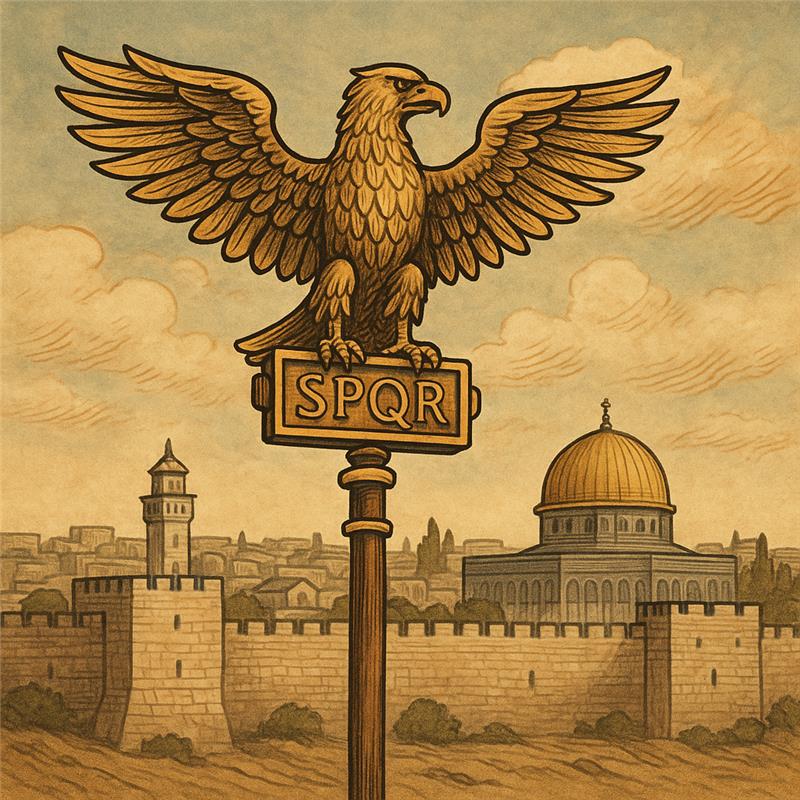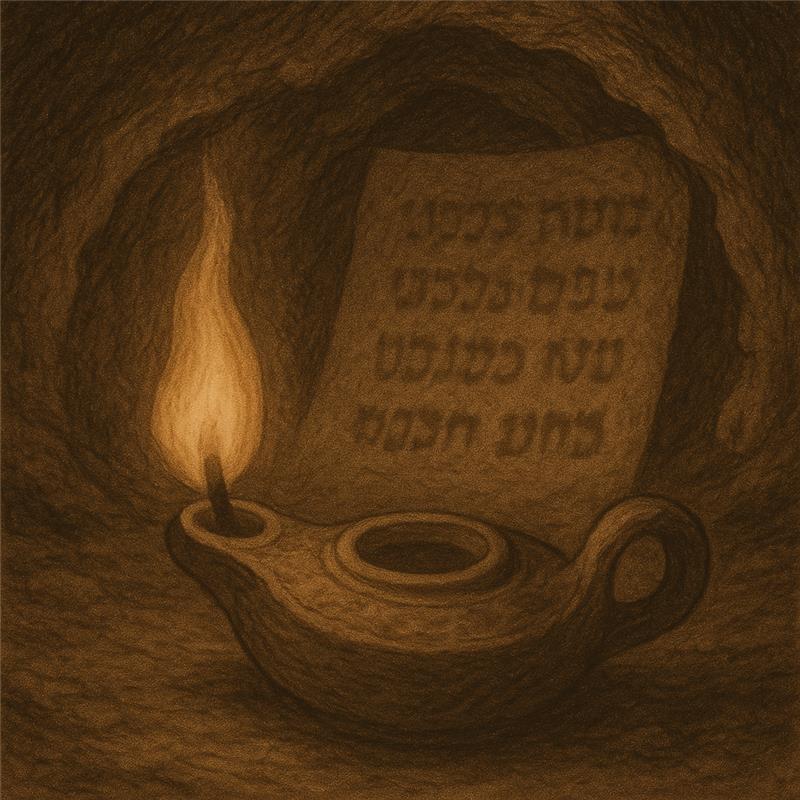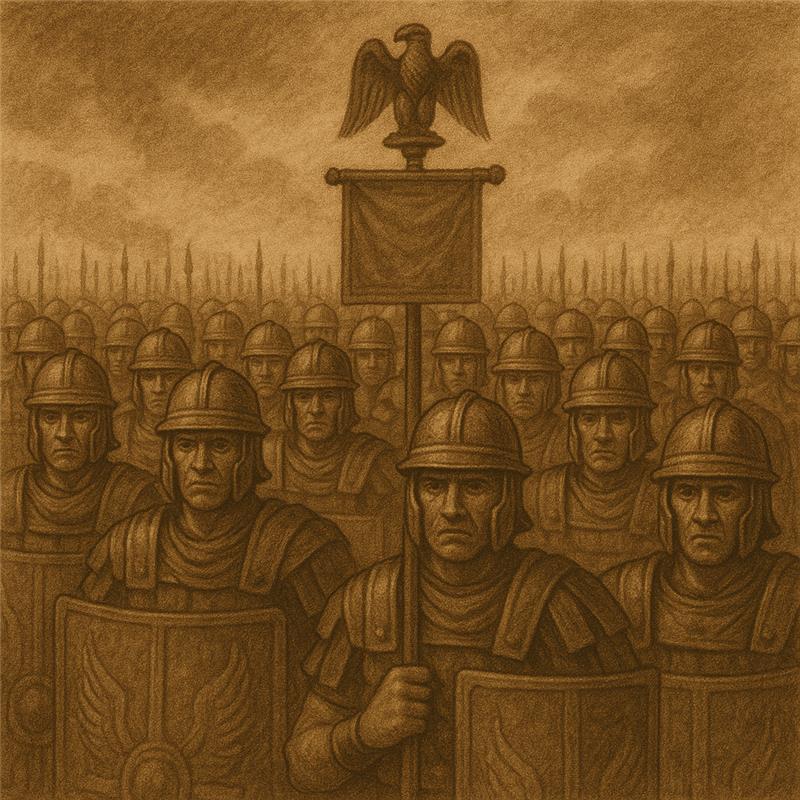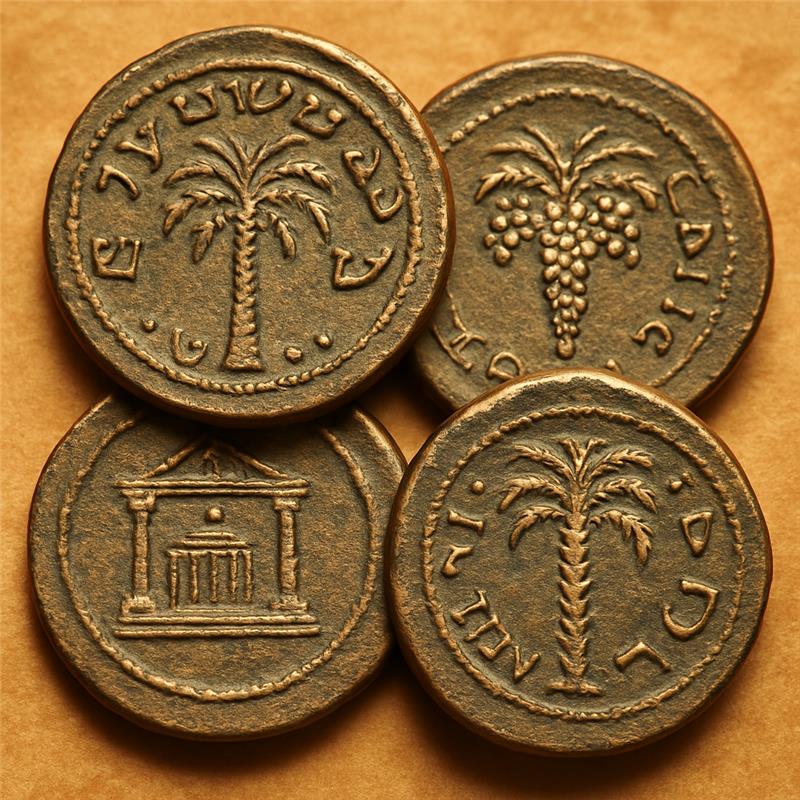Home » About Rabbi Meir » Rabbi meir biography » The Teradion Family Tree: Strength and Faith Through Roman Persecution
Rabbi Hanina ben Teradion Family Tree:
Strength and Faith Through Persecution
Explore the enduring faith of Rabbi Hanina ben Teradion’s family during the trials of Roman persecution and their lasting legacy of strength.
Among the Asara Harugei Malchus (עשרה הרוגי מלכות – Ten Martyrs), Rabbi Hanina ben Teradion (רבי חנינא בן תרדיון) was executed in a cruel and public display meant to break the Jewish spirit. The Romans wrapped him in a Torah scroll, placed bundles of damp wool over his chest to prolong his suffering, and set him aflame. With unshakable faith, he accepted his suffering as sanctification of Hashem’s name, becoming a symbol of mesiras nefesh (self-sacrifice) for all generations.
Beruriah, daughter of Rabbi Hanina ben Teradion and wife of Rabbi Meir, exemplified the enduring spiritual strength of the Teradion family tree. Renowned for her wisdom, fearlessness, and unwavering commitment to Torah, she responded to challenges with strength and courage.
Rabbi Hanina ben Teradion: More Than a Martyr
Before Rabbi Hanina ben Teradion faced martyrdom, he built a life of absolute integrity in Sikhnin (סכנין), a Galilean town known for Torah scholarship. His reputation for honesty was so complete that the Talmud declares that charity funds should only be entrusted to treasurers who match Rabbi Hanina ben Teradion’s impeccable standards of integrity.
When his personal Purim funds mixed with communal charity, Rabbi Hanina ben Teradion couldn’t determine which coins belonged where. His solution? Give everything to the poor rather than risk taking even one coin meant for charity. This same uncompromising honesty would later lead him to openly defy Roman law.
In Pirkei Avot 3:2, Rabbi Hanina ben Teradion taught: “When two sit together and discuss Torah, the Divine Presence rests between them.” This teaching emphasized that even the smallest gathering for Torah study invites God’s presence – a principle that sustained Jews through periods when public study was forbidden.
"The Letters Fly to Heaven": Rabbi Hanina ben Teradion's Final Testament of Faith
The Romans wrapped Rabbi Hanina ben Teradion in the very Sefer Torah (ספר תורה) he had taught from, surrounding him with wet wool to prolong his suffering. As flames consumed the parchment, his students wept: “Rabbi, what do you see?”
His response transformed a moment of horror into eternal inspiration: “Gevililin nisrafin v’otiyot porchot (גווילין נשרפין ואותיות פורחות) – The parchments burn, but the letters fly up to heaven.” Even in his final moments, Rabbi Hanina ben Teradion taught that while physical Torah scrolls could be destroyed, the spiritual essence of Torah remained indestructible.
His students begged him to open his mouth and let the flames enter, ending his suffering quickly. He refused: “Let Him who gave my soul take it away, but no one should injure oneself.” This demonstrated complete faith – even facing execution, he wouldn’t hasten death by his own action, trusting entirely in Hashem’s timing.
The executioner himself was moved by such faith. “Rabbi,” he asked, “if I remove the wet wool and increase the flame, will you bring me to the World to Come?” When Rabbi Hanina affirmed this, the Roman removed the wool and then jumped into the fire himself. A Heavenly voice declared: “Rabbi Hanina ben Teradion and his executioner are invited to the World to Come.”
This vision – of letters ascending while parchment burns – became the eternal metaphor for Jewish survival through persecution. Physical destruction cannot touch spiritual truth. This faith sustained his family and generations of Jews through centuries of persecution.
Rabbi Hanina ben Teradion’s Vision
Complete Teradion Family Tree: Each Member's Fate
Unlike many families who disappeared entirely during the Roman persecutions, we have unusual detail about various members of the Teradion household. Their varied fates – from martyrdom to scholarship to tragedy – reveal the full human response to persecution:
The Parents:
- Rabbi Hanina ben Teradion – One of the Ten Martyrs, he was executed in a manner meant to terrorize: wrapped in a Torah scroll and set aflame, while damp wool was placed over his chest to prolong his agony. His final moments were spent sanctifying God’s name and refusing to renounce the Torah.
- His Wife – Though her name was not preserved, her bravery was. She too was executed by the Romans and, according to tradition, met her death quoting verses from Devarim (Deuteronomy), affirming her faith with her final breath.
The Four Children:
- Beruriah – Their eldest daughter, Beruriah, became renowned as perhaps the greatest female scholar in rabbinic history. Her sharp intellect and mastery of Torah were celebrated by her contemporaries, and she married the famed Rabbi Meir, ensuring that the Teradion legacy lived on through teaching and scholarship.
- The Learned Son – Another child, a son whose name has not come down to us, shared his sister’s devotion to study. He engaged in Torah debates with Beruriah.
- Rescued daughter – Name unknown, she was held in a brothel until Rabbi Meir succeeded in rescuing her.
- Troubled son – Unable to withstand the crushing weight of persecution, this son strayed into crime and ultimately met a tragic end in disgrace.
The Next Generation:
- Two grandsons through Rabbi Meir and Beruriah who died young on Shabbos
- A daughter of Rabbi Meir and Bruriah who married Zivtai
- The family’s spiritual influence continued through their teachings preserved in the Talmud
Though Rome succeeded in scattering and diminishing this remarkable family, they could not destroy what mattered most – the Torah teachings that Rabbi Hanina ben Teradion saw as “letters flying to heaven.”
Beruriah: The Most Brilliant Descendant
Among all children of martyred sages, Beruriah stands alone in her intellectual achievements. The daughter of Rabbi Hanina ben Teradion possessed an extraordinary mind that challenged every assumption about women’s capacity for Torah study. How she acquired her vast knowledge remains undocumented in Talmudic sources – the texts celebrate her learning without explaining its origin.
The Talmud preserves specific numbers about her learning: 300 halachos (laws) from 300 teachers in one day. While this may represent the tradition’s way of expressing extraordinary capability rather than literal count, it establishes her as peer to the greatest Torah scholars of the generation. More importantly, her legal opinions carry weight – when she disagreed with her brother, Rabbi Yehuda ben Bava ruled: “Hanina’s daughter teaches better than his son.”
Beruriah’s sharp wit appears in her exchange with Rabbi Yose HaGelili. When he asked wordily, “By which road do we go to Lod?” she responded: “Didn’t the Chachamim (Sages) say minimize talk with women? You should ask: ‘Which to Lod?'” – demonstrating her mastery of Torah law and how it could be best implemented.
The Rescue Creating "God of Meir Answer Me" Prayer
During the brutal aftermath of the Bar Kokhba revolt, the Romans forbade Jews from keeping even basic mitzvah observances. Rabbi Meir faced an impossible situation.
His sister-in-law had been imprisoned in a Roman brothel after her father, Rabbi Chananiah ben Teradyon, was executed for teaching Torah. Any rescue attempt meant certain death. Yet Rabbi Meir possessed something the Romans couldn’t understand: absolute faith in G-d.
The escape plan combined bribery with spiritual protection. Rabbi Meir gave the guard gold coins but knew money alone wouldn’t save the man from Roman justice. He taught him to pray: “Elaha d’Meir aneni” (God of Meir, answer me). To demonstrate its power, Rabbi Meir provoked guard dogs to attack, then called out the prayer – the dogs immediately retreated. Learn more about the story and the power of this ancient prayer.
When Romans later discovered the escape and tried executing the guard, he invoked this prayer and was saved. However, the miracle exposed Rabbi Meir’s identity, forcing him and Beruriah to flee to Babylonia. This prayer tradition, invoking Rabbi Meir when giving charity, continues today through Rabbi Meir Baal Haness Charities.
The segulah (סגולה – spiritual remedy) of giving tzedakah while saying “Elaka d’Meir Aneni” has helped countless Jews throughout history (specifically to find lost objects). Discover how the prayer works through this ancient practice. When you donate in Rabbi Meir’s merit, you connect to this unbroken chain of faith extending from the Teradion family’s courage to today’s miraculous interventions.
Continue Rabbi Hanina ben Teradion's Mission Through Charity
Geographic Journey: From Galilee to Babylon
The Teradion family’s forced migrations map how Hadrianic persecutions scattered Jewish leadership after the martyrdoms:
- Sikhnin (סכנין) in Galilee: Rabbi Hanina ben Teradion’s base, where he taught Torah publicly and managed charity funds before his martyrdom. Archaeological evidence confirms a significant Jewish community there during the Mishnaic period.
- Tiberias: Where Rabbi Meir and Beruriah initially fled after the rescue, joining other sages regrouping after the persecutions.
- Babylonia (Modern Iraq): Final refuge for Rabbi Meir and Beruriah, beyond Roman reach. They continued teaching there but never returned, their Rabbi Meir family tree ending in exile.
Both Rabbi Hanina ben Teradion’s and Rabbi Meir’s teachings are preserved throughout the Mishnah and discussed in both Talmudic traditions.
How the Teradion Family Safeguarded Torah
The Teradion family’s story reveals patterns of Torah preservation during Roman persecution:
- Exceptional Learning: Beruriah’s remarkable Torah knowledge demonstrates that she achieved scholarly heights, though the Talmud never explains how she acquired her education.
- Emphasis on Memory: Beruriah’s remarkable ability to learn 300 halachos (laws) orally from 300 teachers – even if the numbers are homiletic – highlights how oral transmission became essential under Roman rule when possessing written texts meant death.
- Intimate Study Groups: Rabbi Hanina ben Teradion’s teaching from Pirkei Avot that “two who sit and discuss Torah invite the Divine Presence” took on new meaning during persecution. This principle, though not originally intended for times of danger, validated small, hidden study groups when public academies became death traps.
Faith Through Loss: Beruriah's Response to Tragedy
The most profound test of faith that Jewish tradition preserves about Rabbi Meir and Beruriah involves their own children. Both sons died on the same Shabbos while Rabbi Meir taught at the Study Hall.
From Beruriah’s response to tragedy we see the extent of her inner strength. Beruriah discovered the bodies but chose not to disturb her husband’s Shabbos peace. She laid them on their bed, covered them, and waited. After havdalah, she approached Rabbi Meir with a parable about returning borrowed items.
When he affirmed that a loan must be returned to its owner, she led him to their sons’ bodies: “The Lord gave, and the Lord has taken away.” This response – accepting tragedy while maintaining faith – became the Jewish model for grief.
Continuing the Martyrs' Mission of Spreading Torah
Rabbi Meir Baal Haness Charities carries forward the legacy of Rabbi Hanina ben Teradion and the martyred sages who gave everything for Torah preservation. Just as Rabbi Meir risked his life rescuing a relative from Roman persecution of Jews, and showed unwavering dedication to helping others in whatever way they needed, we dedicate ourselves each day to rescuing Torah families from the grip of poverty.
For over 200 years, our charity has supported those who dedicate themselves to Torah study despite hardship. When you give in memory of Rabbi Hanina ben Teradion and the Teradion family tree, you join an unbroken chain of preserving Judaism under every challenge.
Your Charity Preserves What the Martyrs Died For
Frequently Asked Questions About Rabbi Hanina ben Teradion's Family
How is Rabbi Hanina ben Teradion connected to Rabbi Meir Baal Haness?
Rabbi Hanina ben Teradion was Rabbi Meir Baal Haness’s father-in-law through Rabbi Meir’s marriage to Beruriah. This makes Rabbi Hanina the grandfather of Rabbi Meir’s children who died young. This family connection explains why Rabbi Meir risked everything to rescue Beruriah’s sister from Roman captivity – he was saving his wife’s sister, the daughter of the martyred sage.
Was Beruriah really the only woman scholar in the Talmud?
Beruriah, daughter of Rabbi Hanina ben Teradion, is the only woman whose legal opinions are cited as authoritative throughout the Talmud. While other women are mentioned, only Beruriah’s rulings carry halachic weight. The Chachamim declared “Beruriah has spoken correctly” when accepting her positions. Her unique status resulted from her extraordinary abilities, though how she acquired such extensive Torah knowledge is never explained in the primary sources.
Where was Sikhnin and why was it important?
Sikhnin (סכנין), modern Sakhnin in the Galilee, was where Rabbi Hanina ben Teradion taught Torah before his martyrdom. The town was a center of Jewish learning during the Mishnaic period. Archaeological findings confirm that a substantial Jewish community existed there during roman persecution of jews. After Rabbi Hanina’s execution, the town’s Torah scholarship declined, showing how martyrdom affected entire communities.
How do we invoke the merit of the Teradion family today?
We invoke the merit of the Teradion family today by continuing their unwavering dedication to Torah learning and acts of kindness. Rabbi Hanina ben Teradion exemplified the ultimate commitment to Torah, ultimately giving his life rather than allowing the study and sanctity of Torah to be silenced under Roman oppression. Rabbi Meir Baal Haness carried forward that same spirit, demonstrating extraordinary compassion for helping any struggling Jew, ensuring that no soul was forgotten or abandoned. Today, Rabbi Meir Baal Haness Charities continues this legacy by supporting Torah study, lifting families from poverty, and providing spiritual and material assistance to those in need. Through our acts of tzedakah and support, we honor the Teradion family’s devotion and perpetuate their enduring impact.

 The Hadrianic Persecution
The Hadrianic Persecution  Underground Torah
Underground Torah
 Roman Persecution Tactics
Roman Persecution Tactics The Ordination Chain
The Ordination Chain
